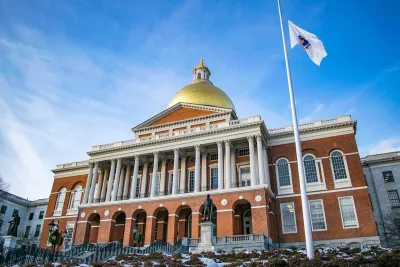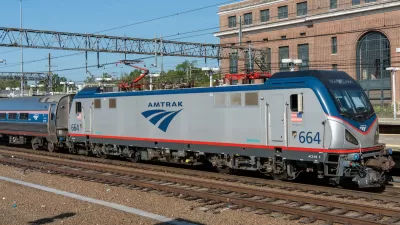A package of proposed bills would change the state’s road funding formula to ensure more money flows to rural areas with limited resources.

Massachusetts Governor Maura Healey is touting a proposal to change the state’s road funding formula, which currently allocates funding based on population and thus can leave out the state’s rural areas.
According to reporting by James Paleologopoulos for WAMC, “The plan involves leveraging millions of dollars collected via the voter-approved Fair Share amendment, also known as the millionaires’ tax. It also includes a five-year, $1.5 billion Chapter 90 Bond Bill filed in late-January.” The bill would raise Chapter 90 funding by $100 million annually and allocate the additional funds based on road mileage only. The Healey administration says the proposal would amount to 75 to 90 percent increases in Chapter 90 funding for over 60 rural communities.
In an address, the governor said, “For too long, the way that funding was distributed in this state - it was done according to population, and what we are proposing to do is change that, to have it done by mileage: the actual amount of roads within a given community.” Rural communities with high road usage and small tax bases were often overlooked and lacked the funds to make critical repairs to roads, bridges, and infrastructure like culverts to divert floodwater.
FULL STORY: Mass. Gov. Maura Healey promotes transportation package’s impacts on rural communities in Conway

Trump Administration Could Effectively End Housing Voucher Program
Federal officials are eyeing major cuts to the Section 8 program that helps millions of low-income households pay rent.

Planetizen Federal Action Tracker
A weekly monitor of how Trump’s orders and actions are impacting planners and planning in America.

Ken Jennings Launches Transit Web Series
The Jeopardy champ wants you to ride public transit.

Rebuilding Smarter: How LA County Is Guiding Fire-Ravaged Communities Toward Resilience
Los Angeles County is leading a coordinated effort to help fire-impacted communities rebuild with resilience by providing recovery resources, promoting fire-wise design, and aligning reconstruction with broader sustainability and climate goals.

When Borders Blur: Regional Collaboration in Action
As regional challenges outgrow city boundaries, “When Borders Blur” explores how cross-jurisdictional collaboration can drive smarter, more resilient urban planning, sharing real-world lessons from thriving partnerships across North America.

Philadelphia Is Expanding its Network of Roundabouts
Roundabouts are widely shown to decrease traffic speed, reduce congestion, and improve efficiency.
Urban Design for Planners 1: Software Tools
This six-course series explores essential urban design concepts using open source software and equips planners with the tools they need to participate fully in the urban design process.
Planning for Universal Design
Learn the tools for implementing Universal Design in planning regulations.
Ada County Highway District
Clanton & Associates, Inc.
Jessamine County Fiscal Court
Institute for Housing and Urban Development Studies (IHS)
City of Grandview
Harvard GSD Executive Education
Toledo-Lucas County Plan Commissions
Salt Lake City
NYU Wagner Graduate School of Public Service





























